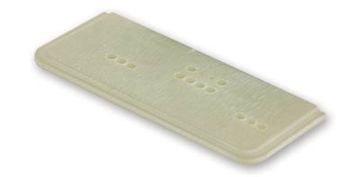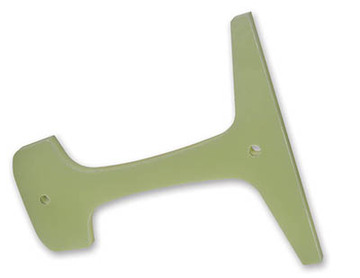What is G10 Material?
To understand what G10 material is, it is good to start with what it is made from. G10 material is a glass epoxy composite laminate. The G10 is made by stacking layers of glass cloth soaked with epoxy resin, compressed until the epoxy cures. G10 comes in flat sheets and it is incredibly tough, in comparison to other glass fiber resin laminates.
The appearance of G10 material is of a yellow or light green laminate. FR4 G10 material is a fire retardant form of G10. G10 material is useful for applications that require electrical insulation, dimensional stability, and moisture resistance.
6 Details About G10 Material
Here are some more details you should know about what material G10 can do, the properties it has, and what makes it so popular:

Strength
G10 is very strong and it shows through different properties like its stability, as shrinkage is under 1%. G10 stands the test of time, as it does not oxidize or rust or grow brittle over time. The tensile strength of a sheet of G10 is comparable to aluminum, while containing a density similar to carbon fiber. The strength of G10 plays a big role in why the material is so commonly used.
Machining Ability
G10 is a very challenging material to machine because of its abrasive glass fillers. Machining speeds that are common with metal are too high for composites. G10 machining requires special machines as well as experts who know how to work with G10 material. Because of how abrasive the surface of G10 is, machining G10 can wear down tools quicker than usual machining materials. G10 FR4 is able to be CNC machined to +-.005 tolerance.
Uniqueness
The challenges in producing G10 sheets make production of it generally limited to experts, as typical machine shops stay away from it. G10 FR4 sheets have a good chemical resistance and fire resistance. G10 also has a low coefficient for thermal expansion, which makes this material useful for applications in medical and aerospace industries. G10 also resists chipping and can come in different sizes and thicknesses. Even though you usually find G10 in sheets, it can be formed into a totally tubular shape!
Low Absorption
G10 is also water resistant and lightweight, which makes the material ideal for underwater use. The low absorption ability also makes G10 desirable in high humidity environments.
Insulation Uses
G10 material has insulating properties that are beneficial for electrical applications. G10 also meets the standards set by the National Electrical Manufacturers Association. The versatility of G10 FR4 allows it to be used through different electronic purposes like mechanical lines.
Precautions
Hazards from G10 are typically from cutting and grinding the material, the dust from glass and epoxy leads to an increase of long term respiratory illnesses. Whenever cut or grinded, wearing a respirator or other similar face protection equipment is a must. Once G10 is dried it is perfectly fine to be around, but if it is burned or melted it will produce toxic fumes.
G10 Material Applications
Electrical applications for G10 include: terminal boards, electric test equipment, and insulation. Other uses for G10 material include knife and gun handles, as well as cryogenic components. Underwater applications include industries like commercial salvage and surveying underwater. Implementation of G10 underwater include pipe saddles and as a structural component. Some more common applications of G10 are in washers, transformers, and in some terminal strips. Because of the strength of G10, mounting boards are made with it, as G10 will not bend or break under a heavy load.

